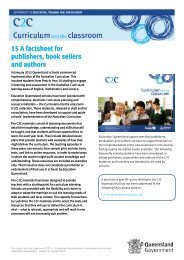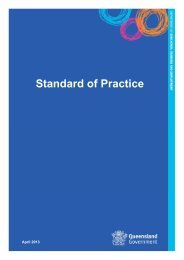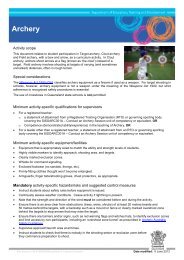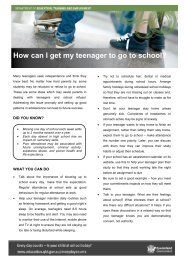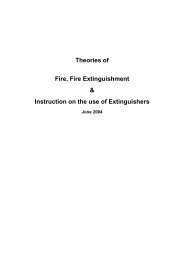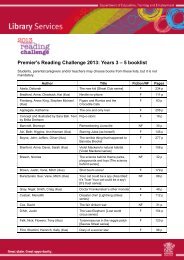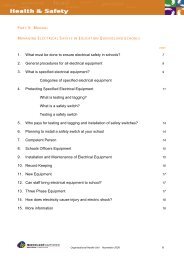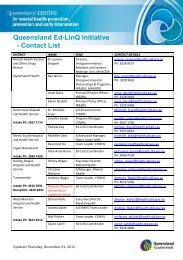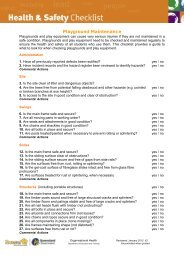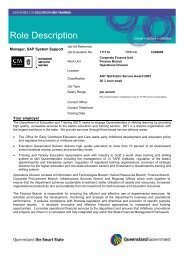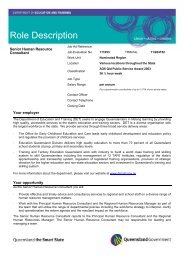Anaphylaxis guidelines for Queensland State Schools - Education ...
Anaphylaxis guidelines for Queensland State Schools - Education ...
Anaphylaxis guidelines for Queensland State Schools - Education ...
Create successful ePaper yourself
Turn your PDF publications into a flip-book with our unique Google optimized e-Paper software.
The level of anaphylaxis training provided to school staff<br />
The level of risk to students being exposed to a potential allergen is reduced if staff:<br />
• understand the student’s condition<br />
• are able to assess potential risks to the student during school-based activities<br />
• are trained in recognising signs and symptoms of anaphylaxis<br />
• are trained and confident in administering an adrenaline auto-injector.<br />
Situations where there may be increased risk to the student<br />
The risks to students with anaphylaxis may increase when there are changes to:<br />
• the school routine (e.g. relief teachers, special events)<br />
• the student’s environment (e.g. camps or excursions)<br />
• the students’ health in<strong>for</strong>mation (e.g. new allergic triggers <strong>for</strong> student have been identified).<br />
6.2 Minimising the risks<br />
Develop an <strong>Anaphylaxis</strong> Risk Management Plan<br />
To ensure that students at risk of anaphylaxis are given every opportunity to participate in the full range of<br />
school activities, potential risks in the student’s school routine and environment should be assessed using<br />
the <strong>Anaphylaxis</strong> Risk Management Plan.<br />
A comprehensive <strong>Anaphylaxis</strong> Risk Management Plan which addresses the needs of students with severe<br />
allergies is an essential part of the school’s risk management. The plan will include risk minimisation<br />
strategies and consider changes to the student’s routine and environment.<br />
The plan assists staff and others involved with the students to plan <strong>for</strong> emergency situations and minimise<br />
risks associated with the student’s condition, their equipment and medication requirements.<br />
To identify potential risks in the school environment and implement risk management strategies,the<br />
<strong>Anaphylaxis</strong> Risk Management Plan should be developed by the school in consultation with:<br />
• supervising teachers<br />
• the parent<br />
• a qualified health practitioner<br />
• the student (where applicable).<br />
Completing an <strong>Anaphylaxis</strong> Risk Management Plan involves identifying and minimising students’ exposure<br />
to potential allergens which may occur during school activities and utilising this in<strong>for</strong>mation to in<strong>for</strong>m<br />
curriculum planning. To assist in completing the <strong>Anaphylaxis</strong> Risk Management Plan, consider the<br />
following most common factors which may lead to an anaphylactic event and recommended risk<br />
minimisation strategies.<br />
11 <strong>Anaphylaxis</strong> <strong>guidelines</strong> <strong>for</strong> <strong>Queensland</strong> state schools



